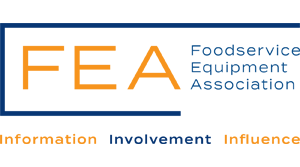« Return to article list
Understanding Chopping Boards
Wood is the traditional material for chopping boards but lost favour in the 1990s when it was thought to be unhygienic. Plastic chopping boards became the recommended cutting surface. Current thinking has changed to believe that properly washed and sanitised, a wood cube is a hygienic cutting surface. Wood is the kindest material to the cutting edge of a knife, being a natural product that does not blunt the edge as quickly.
Cleaning is washing in hot soapy water and using a sanitising spray. Heavy soil and scuff marks can be removed with a steel scraper. Wood cannot be put in a dishwasher because of the porous nature of wood. Prolonged exposure to water will cause the wood to expand, then when it dries it will contract. Continual submersion in water and drying will cause the wood to warp and split. It is water that is the enemy of wooden cutting boards, not the detergents used in the dishwasher. To keep wooden chopping boards in good condition they need to be regularly scraped with a steel scraper and oiled. While there are special wood oils available, any kitchen cooking oil will waterproof the wood without the risk of contaminating food with the smell of pine or linseed.
Plastic is the most popular material for chopping boards. It is harsher on the edge of a kitchen knife than wood but has the advantage of being able to be put through a dishwasher and is usually cheaper than wood. Thin plastic chopping boards may be cheaper than thicker ones, but there is a strong likelihood that the heat of a dishwasher will cause a thin board to warp over time. This makes the board unstable to work on and a personal safety hazard. Racks are available in which to store cutting boards in an upright position. This allows air to circulate around the board and aid drying. Colour coding in chopping boards is a way of reducing the risk of cross-contamination and is widely practised. There are no legal guidelines on which foods should be cut on which colour boards, but the accepted coding system in the UK is this:
- YELLOW – Cooked meats
- RED – Uncooked meats
- WHITE – Bread and dairy products such as cheese
- BLUE – Raw fish
- GREEN – Salad and fruit
- BROWN – Raw vegetables, definitely those grown within the soil.
This six colour system can be helped with laminated instruction sheets which show kitchen employees both in words and with pictures what food products should be cut on which coloured board. Suppliers of colour-coded cutting boards may offer these information sheets free. While colour coding is a first defence line for good food hygiene, it is still good practice for a board to be washed in hot water and sanitised when a different food product of a similar type is being cut up on it. This is very important with raw meat products since chicken needs thorough cooking, but beef steaks cut on the same chopping board might be cooked rare.
While colour-coded boards are helpful in food safety, white is the best colour for visually spotting food debris. It is possible to get white plastic chopping boards that have colour coding on the edge of the board. For very food safety-sensitive kitchens, knives are available with the same plastic colour coding in the handle.
Talk to the experts.
Foodservice Equipment Association
Tel 020 7793 3030
E-mail: enquiries@fea.org.uk
Note to editors:
Key items of prime cooking equipment have their own section in this guide - this information guide takes in prime cooking equipment not covered elsewhere.
FEA would like to contribute advice and technical editorial to any catering equipment feature being planned. Within our membership is unrivalled expertise. Use this information as it is written or as background information for your journalists. FEA makes no charge for any information it supplies.
If you need further information, more in-depth technical contribution contact:
Keith Warren
